grab our FREE
‘Do’s & Don’ts of what to add to your website’ Guide.
‘Do’s & Don’ts of what to add to your website’ Guide.
emails with additional helpful content.
Hi, we're so glad you found us.
We love helping creatives like you finally have the website you’ve always wanted.
few simple steps
Follow us
Should you use Orange as your Branding Colour?
Orange is a youthful, exciting and festive colour that ties fun and activity together. But even though it is energetic, it also has an inspiring side. But how can a colour that aims to lift us also have a controversial side of feeling untrustworthy? Let’s take a deep dive and discover whether you should use Orange as your branding colour.
In this blog, we have developed a three-part system that takes a deep dive into Orange’s meaning, and varieties and how to use this information in your branding.
Are you ready to discover the cheeriest colour of all? Welcome to the World of Orange.
Before we start – missed a part of our Branding Colour Series? Catch up below.
- 1. Should you use Blue as your Branding Colour?
- 2. Should you use Red as your Branding Colour?
- 3. Should you use Yellow as your Branding Colour?
- 4. Should you use Green as your Branding Colour?
- 5. Should you use Pink as your Branding Colour?
- 6. Should you use Orange as your Branding Colour? (this is the blog you’re reading)
- 7. Should you use Purple as your Branding Colour?
- 8. Should you use Grey as your Branding Colour?
- 9. Should you use White as your Branding Colour?
- 10. Should you use Black as your Branding Colour?
- 11. Should you use Beige as your Branding Colour?
- 12. Should you use Brown as your Branding Colour?
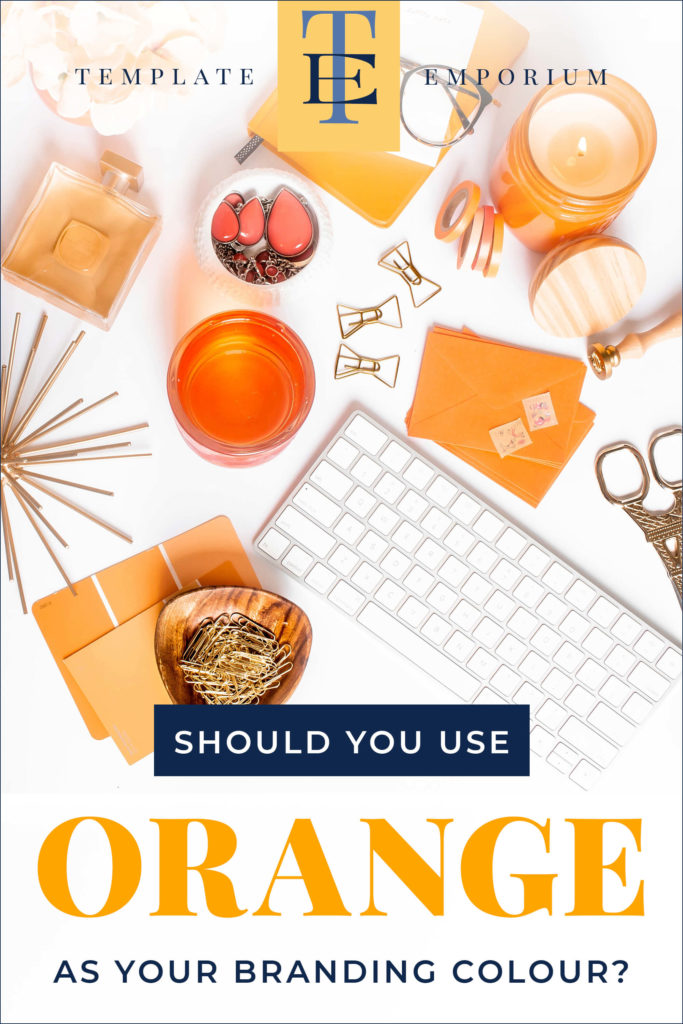
Want to start using Orange as your Branding Colour now?
Download our FREE Guide
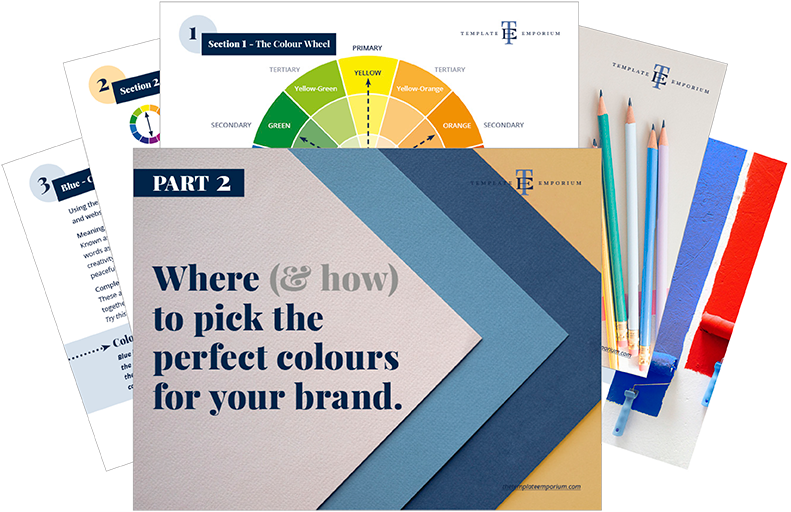
Here’s What We’ll Cover
MEANING OF ORANGE
The Psychological Meaning of Orange
Meaning of Orange to you
Orange in Business
VARIETIES OF ORANGE
Marmalade to Tangerine, we share our favourite Oranges
Orange & The Colour Wheel
Colours that go with Orange
ORANGE IN BRANDING
Matching to the Tone of your Business
Picking the Perfect Palette with Orange
When not to use Orange in your Branding
Should you use Orange as your Branding Colour?
1. Meaning of Orange
The Psychological Meaning
Orange is hailed as the cheeriest colour and is all around. We wake up to it in the sunrise and say good night to it in the sunset. And with Autumn being its season to shine, look out for it in a falling autumn leaf or a pumpkin patch at Halloween.
But like most colours, there are also conflicting meanings of what Orange represents. It can be a very polarizing colour. Its non-fans find it too overwhelming and bright, making it feel superficial and dominant.
We believe it is based more on the shade of Orange rather than the colour itself. And to make it a little easier, we’ve created an icon guide below and broken it into Light, Bright and Dark Orange.
Original unedited icons from the Noun Project
Light Orange Meaning

Bright Orange Meaning

Dark Orange Meaning

Meaning of Orange to You
How do you feel about Orange? Is it a colour you would like to incorporate into your branding? Or does it feel too youthful, bold, bright and overpowering?
Any experiences or memories you’ve had with Green will help determine how you feel about it.
Maybe it reminds you of your youth from the Nickelodeon bright orange branding. Or perhaps it sums up an entire celebration being Halloween or an era in time with the seventies and especially everything Brady Bunch!
If you’re a personal brand, the key is to find a balance between the colours you like and the ones that will attract your ideal client.
Look at the icons above and pick which words sum up the way you feel about Orange. Or the way you want your business to be perceived. Doing this will be a great way to determine the shade of Orange that’s right for you.
Colour Clues
Every colour makes us feel a certain way. Once you learn how to use the Indoor Clues, (more about that below) it will open your eyes to new options and feelings about colour.
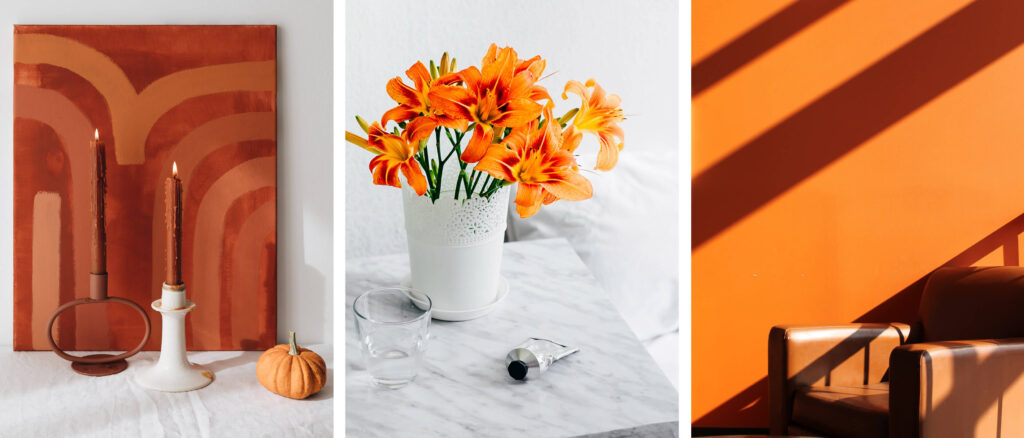
Do you currently have Orange in your home? A good way to start is with a light shade of Orange. Try it in a towel for your bathroom or a candle. The freshness of this colour will also bring a soothing feeling to this part of your home.
Would your ideal client like Orange, how would it make them feel?
In Part 1 of our Colour Guide series “How (& where) to pick the perfect colours for your brand.” we explain everything about Colour Clues. Click here to download it – it will be super helpful.
Orange in Business
As discussed earlier in The Psychological Meaning of Orange, picking the right shade of Orange that reflects your target audience is the key to using this bold, cheery colour.
Below shows how versatile Orange can be in branding simply by picking the right shade.
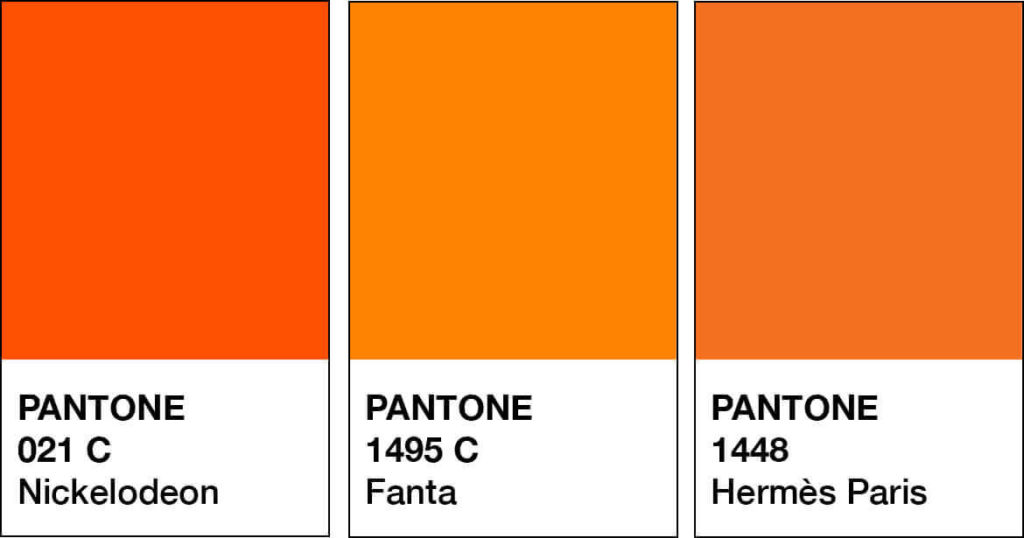
Entertainment
Playing to the fun and youthful side of Orange, you’ll find it in various well-known brands.
Nickelodeon
Penguin Books
WNBA
Food & Beverage
Does Orange stimulate your appetite? The brands below believe it does by using it across their branding.
Fanta
Dunkin Donuts
Reeses’s
Should you use Orange as your Branding Colour?
2. Varieties of Orange
Marmalade to Tangerine, we share our favourite Oranges
Orange is both a WARM & Secondary colour. It’s made by mixing two primary colours (Red + Yellow) together. These primaries appear on either side of Orange on the colour wheel.
Many varieties of Orange may look similar to each other but have different names. From light to dark Orange we’ve compiled a cheat sheet of our favourites below (and included a few you may have never heard of!).
And to make it easy, we added the hex numbers. So you can start using them in your branding today.
Press play on the image below or get all the colour breakdowns in our FREE Guide.
Insider Tips
To make Orange, mix Yellow and Red.
Tints of Orange = Lighter varieties reflect the fun and youthful audience. It feels more approachable and friendly. Such as the colours Apricot and Peach.
Shades of Orange = Darker varieties attract a more mature audience. If your business is more traditional, a deeper orange such as Tiger Eye, Ochre or even Sweet Potato is a safer option.
Orange & The Colour Wheel
One of the questions we often get asked is What colours go together? And the best way to ensure you always get it right is to use the Colour Wheel.
There are 12 hues (colours) on the wheel and consist of:
1. Primary
2. Secondary
3. Tertiary
In this post, we’re focussing on Orange which, is a Secondary Colour.
Want Your Own Colour Wheel? Get it now in our FREE Guide
Orange & Monochromatic
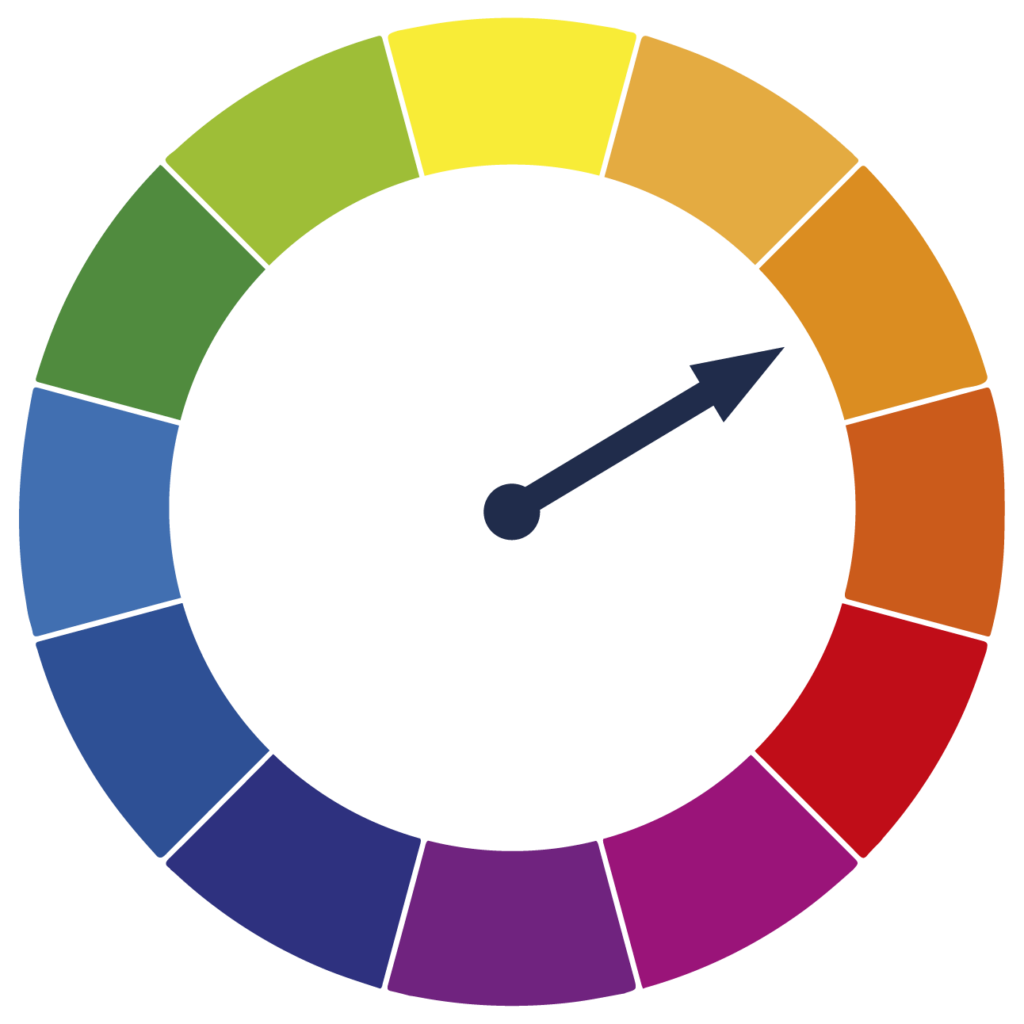
- Monochromatic refers to using one colour only.
- Take your one MAIN colour Orange and add in light and dark variations.
Using one hue (Orange) and adding increasing amounts of:
- White creates a tint of Orange by lightening it. E.g. Apricot
- Grey creates a tone of Orange by desaturating it. E.g. Mango
- Black creates a shade of Orange by darkening it. E.g. Bronze
Orange & Complimentary Colours
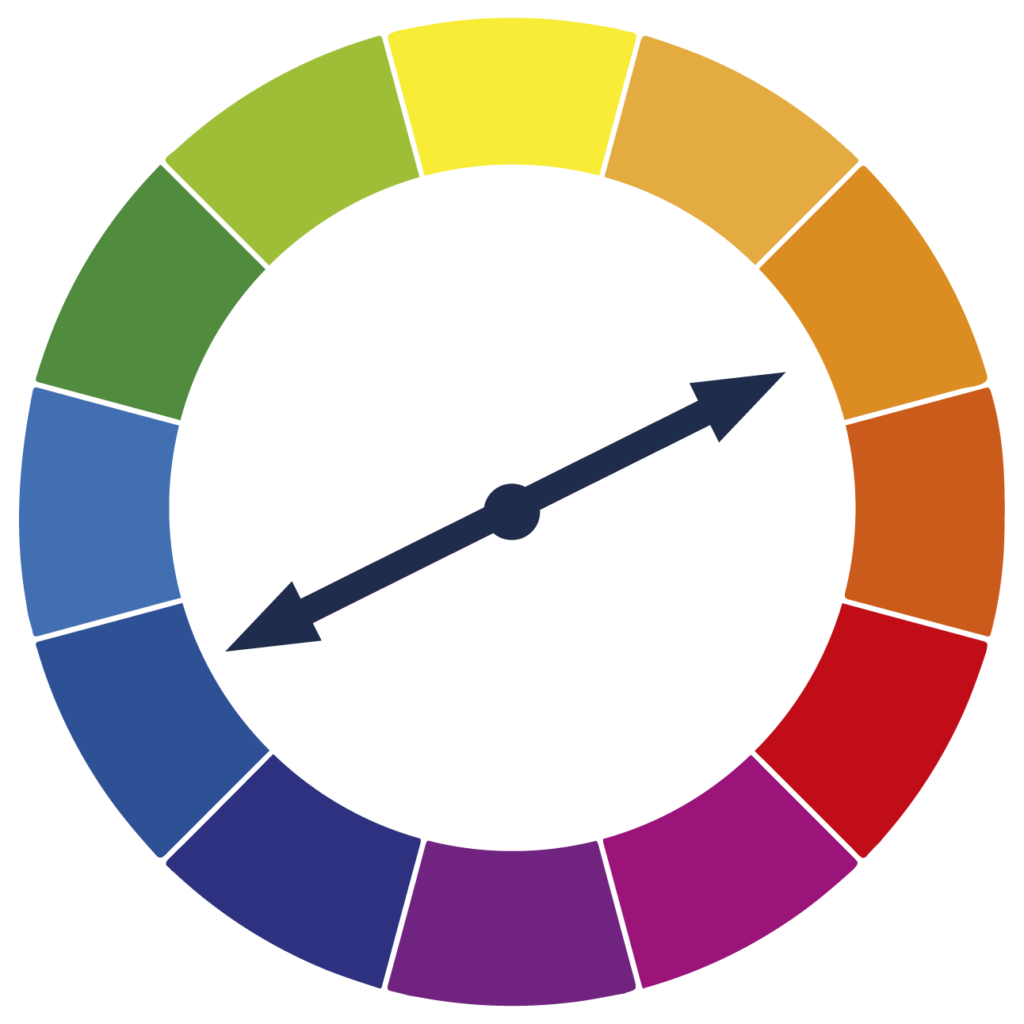
- Complimentary refers to the use of two colours.
- These are colours that are opposite each other on the colour wheel.
- When used together, they bring out the best in each other.
Using your MAIN colour Orange, with its opposite Blue, will create contrast and make the colours look brighter and more vibrant.
Insider Tip
Use the Complimentary Colour Blue in small amounts, making it more of a pop of added colour or an accent.
To avoid them overpowering each other, mix in tints, tones and shades.
Using a lighter shade of Blue means it will fade back. Allowing the Orange to come forward.
Orange & Analogous Colours
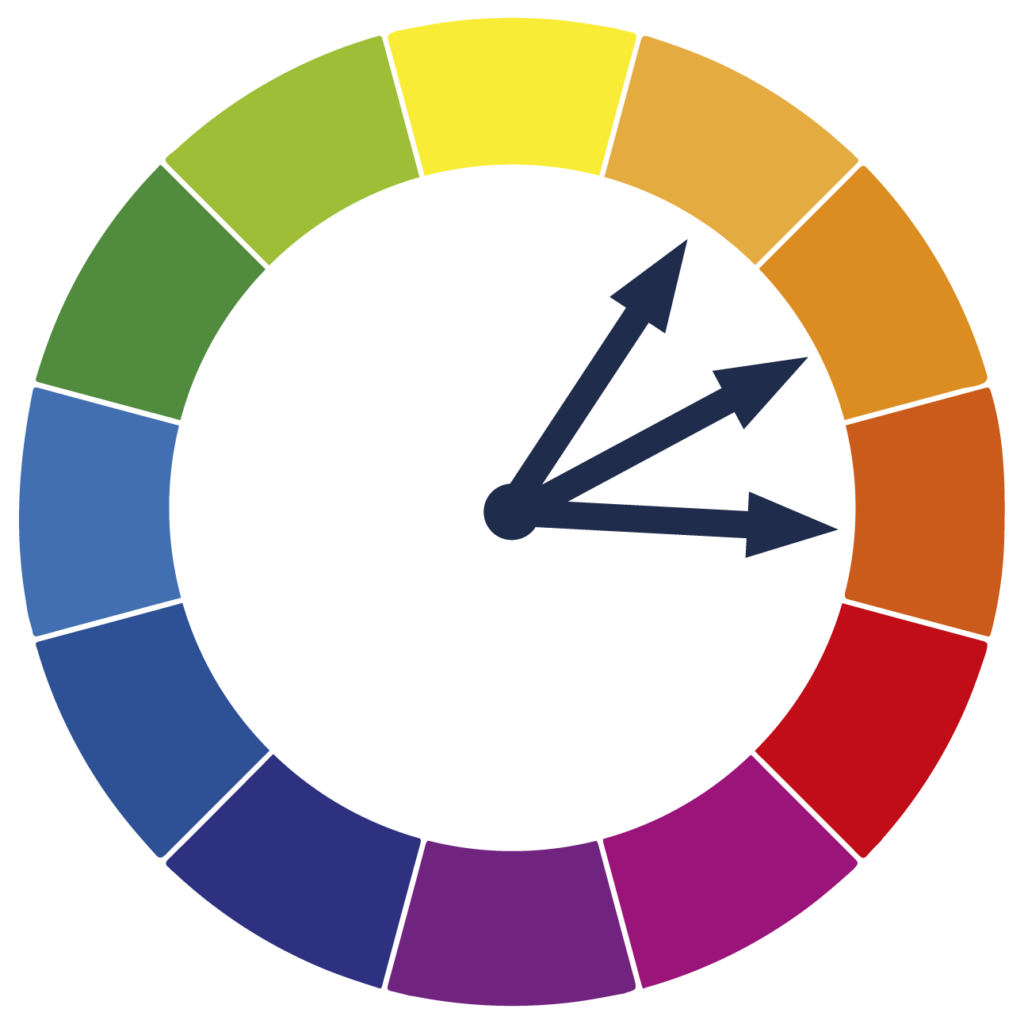
- Analogous refers to the use of three colours.
- These are any three colours that are side-by-side on the colour wheel. Think of them as colour neighbours.
Using your MAIN colour Orange, find the two similar supporting colours sitting next to each other.
The undertones of these colours are similar. Which helps convey a low-contrast, friendly, harmonious mood and will appear easier on the eye.
Orange & Split Complimentary Colours
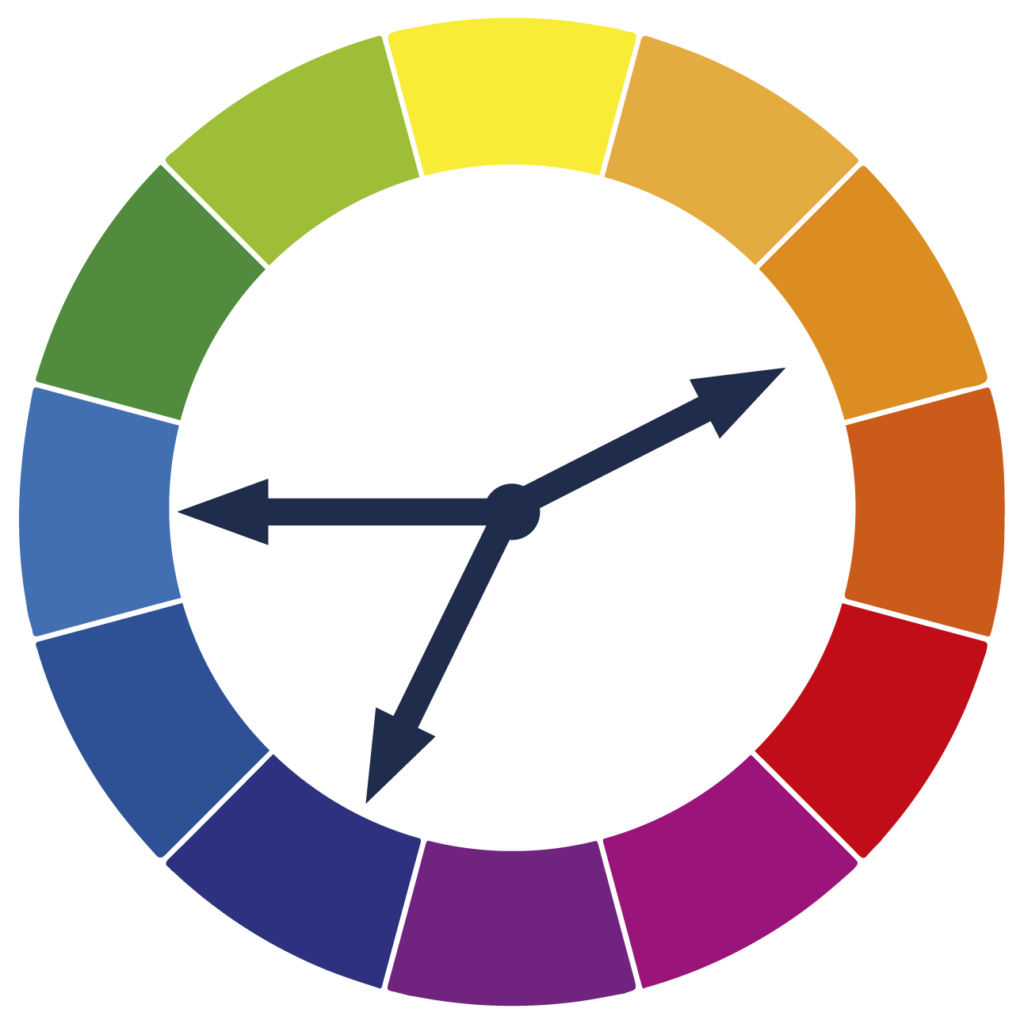
- Split Complimentary is the use of two colours.
- This is using a base colour and the two colours on each side of its complement.
When your MAIN colour is Orange, its complementary colour is Blue. The two colours on each side of the Blue are Blue-green and Blue-purple.
A combination like this creates a low-contrast palette of Analogous colours. And the opposite colour gives a pop of colour.
Insider Tip
This time, we’re going to do the opposite of what we did with the complementary colour palette. Now the MAIN colour Orange is used as the Accent.
Colours that go with Orange
Orange welcomes us from dawn to dusk, from watching it rise in the morning to fruit stalls piled high with inviting juicy oranges to an afternoon walk through piles of Autumn inspired leaves, and who doesn’t love to use it during the fun festive season of Halloween?
For colours as cheery as Orange, how do we make it work well with other colours?
Blending Oranges

As discussed earlier, a monochromatic palette refers to using one colour.
We love combining Orange with Orange because not only does it elevate the look, but the multiple shades of Orange create harmony together.
Try adding Light and Dark variations together.
The lighter shade will soften, while the darker one will be the highlight.
Orange Colour Combinations
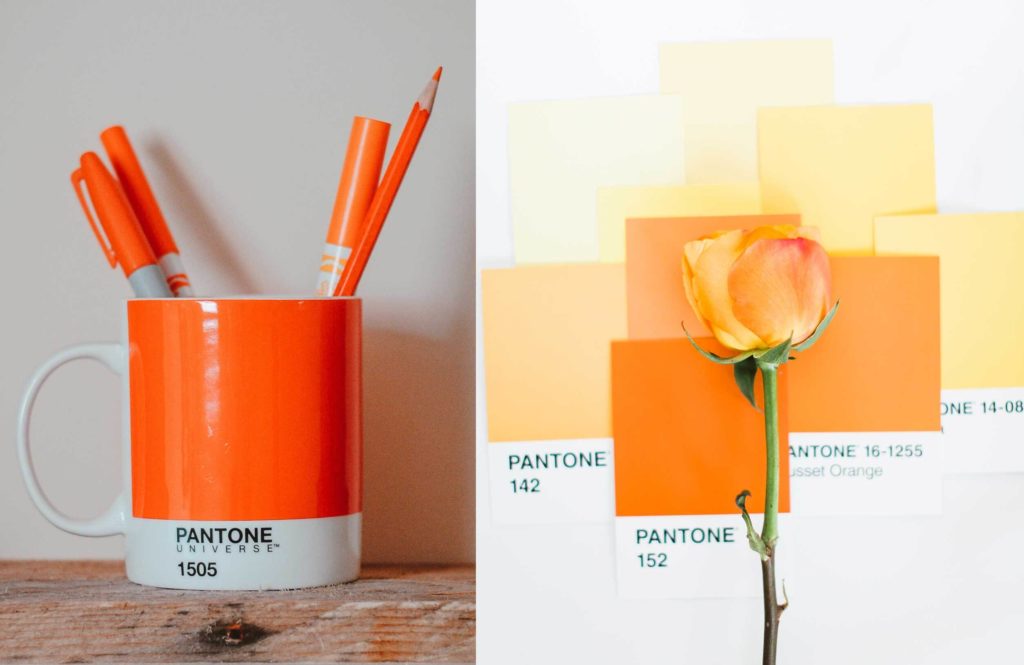
Orange & Blue
This complimentary combo works because the colours are opposites on the colour wheel.
Red-Orange + Cobalt
Tangerine + Navy
Sherbet Orange + Pale Blue
Warm Orange + Royal Blue
Persimmon + Azure Blue
Orange & Black/Grey
This neutral colour always works well with Orange
Apricot + Black
Hunters Orange + Grey
Tangerine + Black
Burnt Orange + Black
Carrot Orange + Warm Grey
Orange & Purple
These warm and cool colours create the perfect balance.
Vivid Orange + Purple
Fiery Orange + Fuchsia
Burnt Orange + Dark Plum
Orange + Mauve
Bright Orange + Soft Lavender
Orange & Green
These colours are side-by-side on the colour wheel (analogous colours).
Burnt Orange + Emerald Green
Orange + Olive
Bright Orange + Bright Turquoise
Orange + Khaki
Papaya + Lime Green
Orange & Brown
Another neutral colour that works well with Orange.
Flame Orange + Brown
Pumpkin + Brown
Sandy Orange + Cinnamon
Cayenne + Dark Chocolate
Sunset Orange + Brown
Orange & Yellow
These colours are side-by-side on the colour wheel (analogous colours).
Tangerine + Yellow
Pumpkin + Yellow
Orange + Sunny Yellow
Deep Saffron + Banana Yellow
Tiger’s Eye + Sandstorm
Orange & Pink
These colours are side-by-side on the colour wheel (analogous colours).
Orange + Cerise
Fiery Orange + Dusty Rose
Orange + Shocking Pink
Pastel Orange + Light Carmine Pink
Flamingo Orange + Lolly Pink
Orange + Rosy Pink
Want more Orange Colour Combinations? Click on the image below.
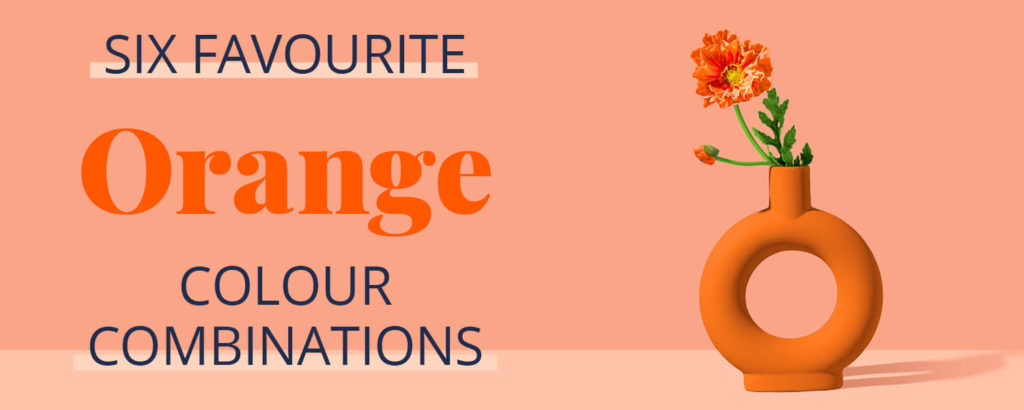
Should you use Orange as your Branding Colour?
3. Orange in Branding
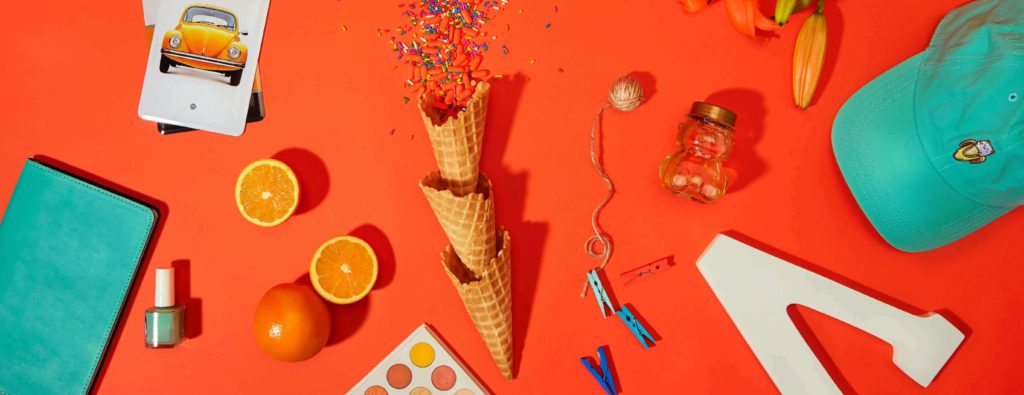
Matching to the Tone of your Business
As discussed earlier, we break Orange into three options, light, bright and dark. Use this as a guide to help you pick the right shade of Orange for your branding.
Light Orange
Cheerfulness, courage, encouragement, freshness, friendliness, happiness, health, hope, joy, lively, playful, pleasant, soothing, sweetness and vitality.
Bright Orange
Active, boldness, burning, energetic, enthusiastic, excited, extrovert, festive, flavourful, fun, healthy, helpful, silly, warning and youthful.
Dark Orange
Abundant, beauty, comfort, communication, confidence, cosy, creativity, inspiration, security, solace, strength, success, togetherness, warmth and wealth.
Picking the Perfect Palette with Orange
Our 5-step Perfect Palette Process
Need help choosing your Brand Colour Palette? We’ve created a simple step-by-step process.
Grab our free guide as a handy download.

Step 1
Pick the Main Brand Colour
So you’ve picked Orange. Now you have to decide on the type of Orange, is it light, bright or dark?
Step 2
Pick a Support Brand Colour
If you feel stuck at this stage, just remember this colour creates harmony with the MAIN. Refer back to our tips earlier on Orange & The Colour Wheel and the Colours that go with Orange to help you decide.
Step 3
Pick a Light Neutral Brand Colour
Why do you need neutrals in your brand colour palette? Because it creates balance.
Not sure which neutrals to pick? Go to page 16 of our free guide.
Step 4
Pick a Dark Neutral Brand Colour
Your light neutral colour needs a partner. So now it’s time to pick a dark neutral colour for even more balance.
Our guide on page 16 explains everything.
Step 5
Pick an Accent Colour
This colour is used to make something on your website pop. Therefore it’s only used sparingly.
Page 22 of our free guide will explain more.
Web and Print Branding
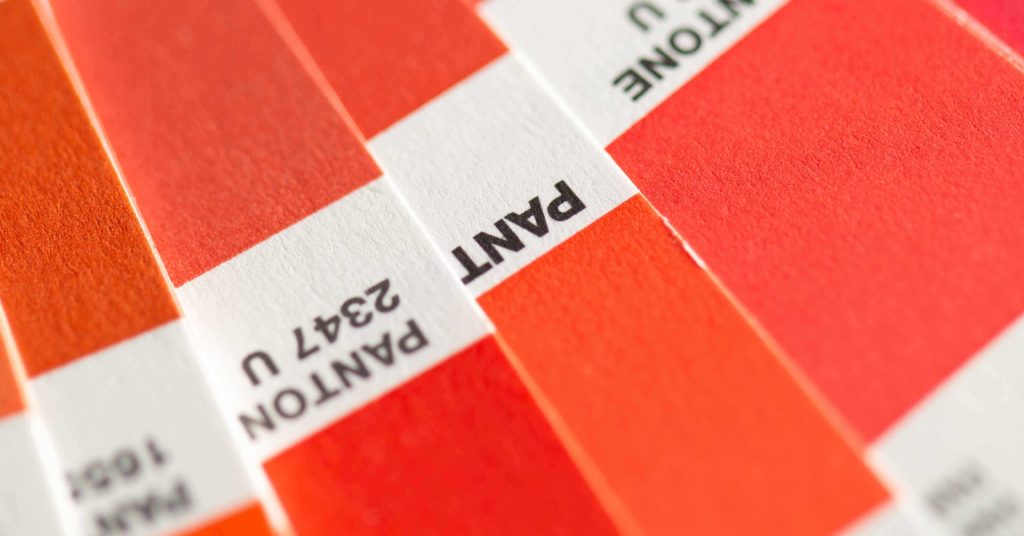
Once you have picked the right Orange for your business, add the hex code to your website.
View how it looks on both desktop and mobile. To create consistency only, use the one hex code number to ensure the Orange you chose is always the correct shade.
For print, instead of a hex code, you will need the CMYK (Cyan, Magenta, Yellow & Black) or Pantone, colour breakdown to ensure the Orange will print out the way you want.
When not to use Orange in your Branding
Brand Colour Palette
When it comes to creating a brand colour palette, and you decide to use Black as your support colour to Orange, be careful the combination doesn’t become too “Halloween”. Orange & Black will always be associated with this time of the year. And to avoid this, it comes down to the shade of the colours you pick.
Refer to Orange Colour Combinations for our tips.
You Did it!
That’s a wrap on Should you use Orange as your Branding Colour?
How do you feel about Orange now? Are you excited to try it with your branding? Let us know. And in the meantime, follow us on Pinterest for more blog posts like this.
Where to now?
- If you’re a fan of pretty in Pink – Check this blog out.
- What about the world’s most popular colour, Blue? Find it here.
- Or maybe you like the passion of Red? – Visit Here.
Don’t forget to download our FREE Colour Guide

Like the Blog Post?
PIN IT FOR LATER. And for more helpful tips follow us on PINTEREST.
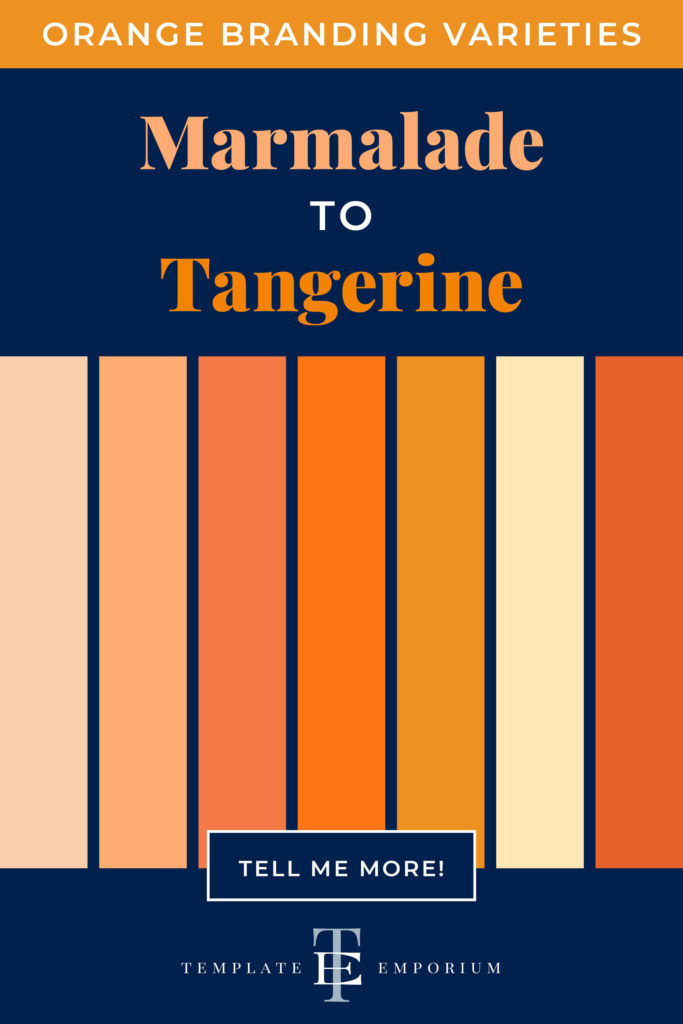
Search
Create & launch your website in a
few simple steps
FREE GUIDE
While you’re here,
grab our FREE
‘Do’s & Don’ts of what to add to your website’ Guide.
‘Do’s & Don’ts of what to add to your website’ Guide.
When you sign up, we’ll send you
emails with additional helpful content.
About Lavinia & Tom
Hi, we're so glad you found us.
We love helping creatives like you finally have the website you’ve always wanted.
Blog Categories
Follow us